6. Schutgens F, Clevers H. Human organoids: tools for understanding biology and treating diseases. Annu Rev Pathol 2020;15:211-34.


7. Rogulska O, Havelkova J, Petrenko Y. Cryopreservation of organoids. Cryo Letters 2023;44:65-75.


12. Scholz EC, Navas CG. The maining of cryopreservation for in-vitro fertilization patients. London: InTech; 2014.
17. Pegg DE. The history and principles of cryopreservation. Semin Reprod Med 2002;20:5-13.


18. Liebermann J, Nawroth F, Isachenko V, Isachenko E, Rahimi G, Tucker MJ. Potential importance of vitrification in reproductive medicine. Biol Reprod 2002;67:1671-80.


23. Kolibianakis EM, Venetis CA, Tarlatzis BC. Cryopreservation of human embryos by vitrification or slow freezing: which one is better? Curr Opin Obstet Gynecol 2009;21:270-4.


24. Fuller B, Paynter S. Fundamentals of cryobiology in reproductive medicine. Reprod Biomed Online 2004;9:680-91.


25. Mart├Łnez-Flores F, Chac├│n-G├│mez M, Madinaveitia-Villanueva JA, Barrera-Lopez A, Aguirre-Cruz L, Querevalu-Murillo W. The clinical use of cryopreserved human skin allografts for transplantation. Cir Cir 2015;83:485-91.


29. Nowshari MA, Brem G. Effect of freezing rate and exposure time to cryoprotectant on the development of mouse pronuclear stage embryos. Hum Reprod 2001;16:2368-73.


30. Mukaida T, Nakamura S, Tomiyama T, Wada S, Kasai M, Takahashi K. Successful birth after transfer of vitrified human blastocysts with use of a cryoloop containerless technique. Fertil Steril 2001;76:618-20.


32. Terry C, Dhawan A, Mitry RR, Lehec SC, Hughes RD. Optimization of the cryopreservation and thawing protocol for human hepatocytes for use in cell transplantation. Liver Transpl 2010;16:229-37.


36. Quinn PJ. Effects of temperature on cell membranes. Symp Soc Exp Biol 1988;42:237-58.

37. Hawkins BJ, Abazari A, Mathew AJ. Biopreservation Best Practices for regenerative medicine GMP manufacturing & focus on optimized biopreservation media. Cell Gene Ther Insights 2017;3:345-58.

40. Meryman HT. Cryoprotective agents. Cryobiology 1971;8:173-83.


41. Seo JM, Sohn MY, Suh JS, Atala A, Yoo JJ, Shon YH. Cryopreservation of amniotic fluid-derived stem cells using natural cryoprotectants and low concentrations of dimethylsulfoxide. Cryobiology 2011;62:167-73.


42. Briquet A, Halleux A, Lechanteur C, Beguin Y. Neuropeptides to replace serum in cryopreservation of mesenchymal stromal cells? Cytotherapy 2013;15:1385-94.


44. De Rosa A, De Francesco F, Tirino V, Ferraro GA, Desiderio V, Paino F, et al. A new method for cryopreserving adipose-derived stem cells: an attractive and suitable large-scale and long-term cell banking technology. Tissue Eng Part C Methods 2009;15:659-67.


45. Roy S, Arora S, Kumari P, Ta M. A simple and serum-free protocol for cryopreservation of human umbilical cord as source of WhartonŌĆÖs jelly mesenchymal stem cells. Cryobiology 2014;68:467-72.


47. Liu Y, Xu X, Ma X, Martin-Rendon E, Watt S, Cui Z. Cryopreservation of human bone marrow-derived mesenchymal stem cells with reduced dimethylsulfoxide and well-defined freezing solutions. Biotechnol Prog 2010;26:1635-43.


48. Svalgaard JD, Munthe-Fog L, Ballesteros OR, Brooks PT, Rangatchew F, Vester-Glowinski PV, et al. Cryopreservation of adipose-derived stromal/stem cells using 1-2% Me2SO (DMSO) in combination with pentaisomaltose: An effective and less toxic alternative to comparable freezing media. Cryobiology 2020;96:207-13.


50. Boroda AV, Kipryushina YO, Yakovlev KV, Odintsova NA. The contribution of apoptosis and necrosis in freezing injury of sea urchin embryonic cells. Cryobiology 2016;73:7-14.


52. Liu X, Pan Y, Liu F, He Y, Zhu Q, Liu Z, et al. A review of the material characteristics, antifreeze mechanisms, and applications of cryoprotectants (CPAs). J Nanomater 2021;2021:9990709.


53. Pegg DE. The relevance of ice crystal formation for the cryopreservation of tissues and organs. Cryobiology 2020;93:3-11.


54. Prickett RC, Marquez-Curtis LA, Elliott JA, McGann LE. Effect of supercooling and cell volume on intracellular ice formation. Cryobiology 2015;70:156-63.


57. Matsumura K, Hayashi F, Nagashima T, Rajan R, Hyon SH. Molecular mechanisms of cell cryopreservation with polyampholytes studied by solid-state NMR. Commun Mater 2021;2:15.


59. Carpenter JF, Crowe JH. An infrared spectroscopic study of the interactions of carbohydrates with dried proteins. Biochemistry 1989;28:3916-22.


60. Carpenter JF, Martin B, Crowe LM, Crowe JH. Stabilization of phosphofructokinase during air-drying with sugars and sugar/transition metal mixtures. Cryobiology 1987;24:455-64.


61. Irajizad P, Nazifi S, Ghasemi H. Icephobic surfaces: definition and figures of merit. Adv Colloid Interface Sci 2019;269:203-18.


64. Mazur P. The role of intracellular freezing in the death of cells cooled at supraoptimal rates. Cryobiology 1977;14:251-72.


65. Meryman HT. Cryopreservation of living cells: principles and practice. Transfusion 2007;47:935-45.


66. Brinkkoetter PT, Song H, L├Čsel R, Schnetzke U, Gottmann U, Feng Y, et al. Hypothermic injury: the mitochondrial calcium, ATP and ROS love-hate triangle out of balance. Cell Physiol Biochem 2008;22:195-204.


68. Gunter TE, Gunter KK, Sheu SS, Gavin CE. Mitochondrial calcium transport: physiological and pathological relevance. Am J Physiol 1994;267(2 Pt 1):C313-39.


70. Ma Y, Gao L, Tian Y, Chen P, Yang J, Zhang L. Advanced biomaterials in cell preservation: Hypothermic preservation and cryopreservation. Acta Biomater 2021;131:97-116.


72. Tatone C, Di Emidio G, Vento M, Ciriminna R, Artini PG. Cryopreservation and oxidative stress in reproductive cells. Gynecol Endocrinol 2010;26:563-7.


73. Edreva A. Generation and scavenging of reactive oxygen species in chloroplasts: a submolecular approach. Agric Ecosyst Environ 2005;106:119-33.

75. Pe├▒a FJ, Gibb Z. Oxidative stress and reproductive function: oxidative stress and the long-term storage of horse spermatozoa. Reproduction 2022;164:F135-44.


76. Cadet J, Douki T, Ravanat JL. Measurement of oxidatively generated base damage in cellular DNA. Mutat Res 2011;711:3-12.


77. Wang AW, Zhang H, Ikemoto I, Anderson DJ, Loughlin KR. Reactive oxygen species generation by seminal cells during cryopreservation. Urology 1997;49:921-5.


83. Agarwal A, Said TM, Bedaiwy MA, Banerjee J, Alvarez JG. Oxidative stress in an assisted reproductive techniques setting. Fertil Steril 2006;86:503-12.


86. Mykhailova OO, Makashova OY, Zubov PM, Babijchuk LA. Improving of cryoprotectant media for human cord blood nucleated cells cryopreservation. In: IIR Workshop on Cold Applications in Life Sciences; 2016 Sep 8ŌłÆ9; Dresden. International Institute of Refrigeration; 2016;131-4.
90. Baust JM, Van Buskirk, Baust JG. Cell viability improves following inhibition of cryopreservation-induced apoptosis. In Vitro Cell Dev Biol Anim 2000;36:262-70.


92. Moriga T, Arii S, Takeda Y, Furuyama H, Mizumoto M, Mori A, et al. Protection by vascular endothelial growth factor against sinusoidal endothelial damage and apoptosis induced by cold preservation. Transplantation 2000;69:141-7.


93. Shin SY, Lee JY, Lee E, Choi J, Yoon BK, Bae D, et al. Protective effect of vascular endothelial growth factor (VEGF) in frozen-thawed granulosa cells is mediated by inhibition of apoptosis. Eur J Obstet Gynecol Reprod Biol 2006;125:233-8.


94. Ben RN. Antifreeze glycoproteins: preventing the growth of ice. Chembiochem 2001;2:161-6.


98. Mugnano JA, Wang T, Layne JR Jr, DeVries AL, Lee RE Jr. Antifreeze glycoproteins promote intracellular freezing of rat cardiomyocytes at high subzero temperatures. Am J Physiol 1995;269(2 Pt 2):R474-9.


99. Matsumoto S, Matsusita M, Morita T, Kamachi H, Tsukiyama S, Furukawa Y, et al. Effects of synthetic antifreeze glycoprotein analogue on islet cell survival and function during cryopreservation. Cryobiology 2006;52:90-8.


102. Kubo K, Kuroyanagi Y. The possibility of long-term cryopreservation of cultured dermal substitute. Artif Organs 2005;29:800-5.


103. Kofron MD, Opsitnick NC, Attawia MA, Laurencin CT. Cryopreservation of tissue engineered constructs for bone. J Orthop Res 2003;21:1005-10.


104. Batnyam O, Suye SI, Fujita S. Direct cryopreservation of adherent cells on an elastic nanofiber sheet featuring a low glass-transition temperature. RSC Adv 2017;7:51264-71.

107. Le Blanc K, Rasmusson I, Sundberg B, G├Čtherstr├Čm C, Hassan M, Uzunel M, et al. Treatment of severe acute graft-versus-host disease with third party haploidentical mesenchymal stem cells. Lancet 2004;363:1439-41.


108. Le Blanc K, Frassoni F, Ball L, Locatelli F, Roelofs H, Lewis I, et al. Mesenchymal stem cells for treatment of steroid-resistant, severe, acute graft-versus-host disease: a phase II study. Lancet 2008;371:1579-86.


111. Pendergraft SS, Sadri-Ardekani H, Atala A, Bishop CE. Three-dimensional testicular organoid: a novel tool for the study of human spermatogenesis and gonadotoxicity in vitro. Biol Reprod 2017;96:720-32.


113. Lee BE, Lee BJ, Lee KJ, Lee M, Lim YJ, Choi JK, et al. A simple and efficient cryopreservation method for mouse small intestinal and colon organoids for regenerative medicine. Biochem Biophys Res Commun 2022;595:14-21.


114. Marston WA, Hanft J, Norwood P, Pollak R; Dermagraft Diabetic Foot Ulcer Study Group. The efficacy and safety of Dermagraft in improving the healing of chronic diabetic foot ulcers: results of a prospective randomized trial. Diabetes Care 2003;26:1701-5.

115. Snyder RJ, Kirsner RS, Warriner RA 3rd, Lavery LA, Hanft JR, Sheehan P. Consensus recommendations on advancing the standard of care for treating neuropathic foot ulcers in patients with diabetes. Ostomy Wound Manage 2010;56(4 Suppl):S1-24.

116. Warriner RA 3rd, Cardinal M; TIDE Investigators. Human fibroblast-derived dermal substitute: results from a treatment investigational device exemption (TIDE) study in diabetic foot ulcers. Adv Skin Wound Care 2011;24:306-11.

117. Frykberg RG, Marston WA, Cardinal M. The incidence of lower-extremity amputation and bone resection in diabetic foot ulcer patients treated with a human fibroblast-derived dermal substitute. Adv Skin Wound Care 2015;28:17-20.


118. Sabolinski ML, Capotorto JV. Comparative effectiveness of a human fibroblast-derived dermal substitute and a viable cryopreserved placental membrane for the treatment of diabetic foot ulcers. J Comp Eff Res 2019;8:1229-38.


119. Sibbald RG, Zuker R, Coutts P, Coelho S, Williamson D, Queen D. Using a dermal skin substitute in the treatment of chronic wounds secondary to recessive dystrophic epidermolysis bullosa: a case series. Ostomy Wound Manage 2005;51:22-46.
120. Joncas V, Prado R, Price Ritchie C, Kaufman LM, Schober-Flores C, Arbuckle HA. The closure of a large chronic abdominal wound in a neonate utilizing a biologic dressing. Adv Skin Wound Care 2010;23:404-5.


121. Rubinsky B, Lee CY, Bastacky J, Onik G. The process of freezing and the mechanism of damage during hepatic cryosurgery. Cryobiology 1990;27:85-97.


122. Bischof JC, Rubinsky B. Microscale heat and mass transfer of vascular and intracellular freezing in the liver. J Heat Transfer 1993;115:1029-35.


123. Kulikova B, Kovac M, Bauer M, Tomkova M, Olexikova L, Vasicek J, et al. Survivability of rabbit amniotic fluid-derived mesenchymal stem cells post slow-freezing or vitrification. Acta Histochem 2019;121:491-9.


125. Iwama A, Yamada C, Uchida K, Ujihira M. Pre-incubation with hyaluronan reduces cellular damage after cryopreservation in densely cultured cell monolayers. Biomed Mater Eng 2014;24:1497-506.


127. Chen F, Zhang W, Wu W, Jin Y, Cen L, Kretlow JD, et al. Cryopreservation of tissue-engineered epithelial sheets in trehalose. Biomaterials 2011;32:8426-35.


129. Pashley DH, Carvalho RM, Tay FR, Agee KA, Lee KW. Solvation of dried dentin matrix by water and other polar solvents. Am J Dent 2002;15:97-102.

130. Mansbridge JN, Liu K, Pinney RE, Patch R, Ratcliffe A, Naughton GK. Growth factors secreted by fibroblasts: role in healing diabetic foot ulcers. Diabetes Obes Metab 1999;1:265-79.


131. Naughton G, Mansbridge J, Gentzkow G. A metabolically active human dermal replacement for the treatment of diabetic foot ulcers. Artif Organs 1997;21:1203-10.


132. Stokich B, Osgood Q, Grimm D, Moorthy S, Chakraborty N, Menze MA. Cryopreservation of hepatocyte (HepG2) cell monolayers: impact of trehalose. Cryobiology 2014;69:281-90.


133. Kinasiewicz J, Antosiak-Iwanska M, Godlewska E, Sitarek E, Sabat M, Fiedor P, et al. Effect of over 10-year cryopreserved encapsulated pancreatic islets of langerhans. Exp Clin Transplant 2018;16:461-5.

134. Bisceglie V. ├£ber die antineoplastische immunit├żt. Zeitschrift f├╝r Krebsforschung 1934;40:122-40.


135. Choe G, Park J, Jo H, Kim YS, Ahn Y, Lee JY. Studies on the effects of microencapsulated human mesenchymal stem cells in RGD-modified alginate on cardiomyocytes under oxidative stress conditions using in vitro biomimetic co-culture system. Int J Biol Macromol 2019;123:512-20.


136. Choe G, Kim SW, Park J, Park J, Kim S, Kim YS, et al. Anti-oxidant activity reinforced reduced graphene oxide/alginate microgels: mesenchymal stem cell encapsulation and regeneration of infarcted hearts. Biomaterials 2019;225:119513.


137. Park J, Choe G, Oh S, Lee JY. In situ formation of proangiogenic mesenchymal stem cell spheroids in hyaluronic acid/alginate core-shell microcapsules. ACS Biomater Sci Eng 2020;6:6938-48.


138. Choi D, Park J, Heo J, Oh TI, Lee E, Hong J. Multifunctional collagen and hyaluronic acid multilayer films on live mesenchymal stem cells. ACS Appl Mater Interfaces 2017;9:12264-71.


139. Choi D, Lee H, Kim HB, Yang M, Heo J, Won Y, et al. Cytoprotective self-assembled RGD peptide nanofilms for surface modification of viable mesenchymal stem cells. Chem Mater 2017;29:2055-65.
140. Matsuzawa A, Matsusaki M, Akashi M. Effectiveness of nanometer-sized extracellular matrix layer-by-layer assembled films for a cell membrane coating protecting cells from physical stress. Langmuir 2013;29:7362-8.


141. Pravdyuk AI, Petrenko YA, Fuller BJ, Petrenko AY. Cryopreservation of alginate encapsulated mesenchymal stromal cells. Cryobiology 2013;66:215-22.


142. Zhao G, Liu X, Zhu K, He X. Hydrogel encapsulation facilitates rapid-cooling cryopreservation of stem cell-laden core-shell microcapsules as cell-biomaterial constructs. Adv Healthc Mater 2017 6:
10.1002/adhm.201700988.




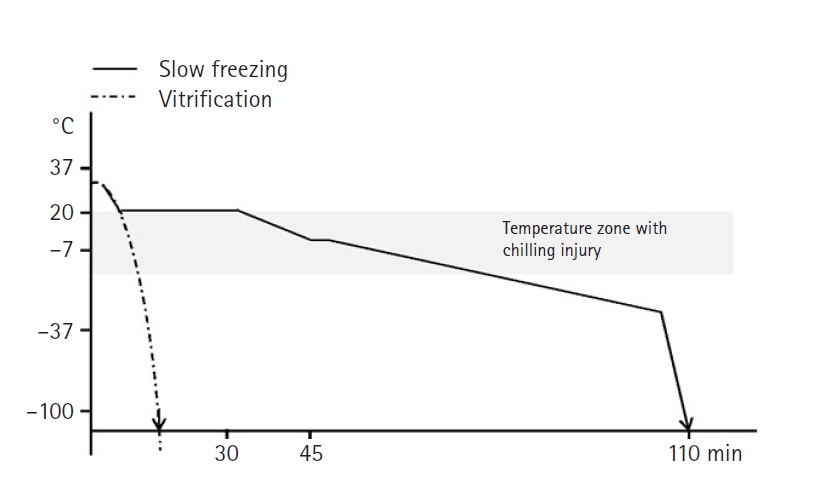
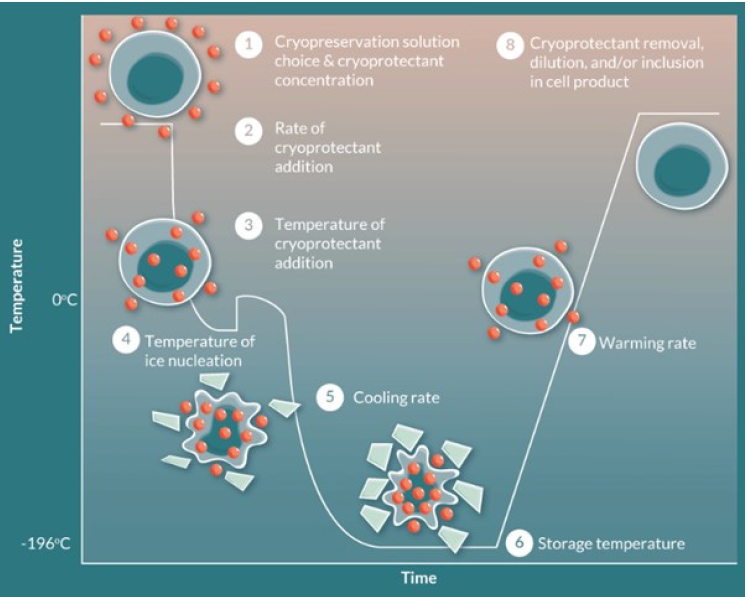
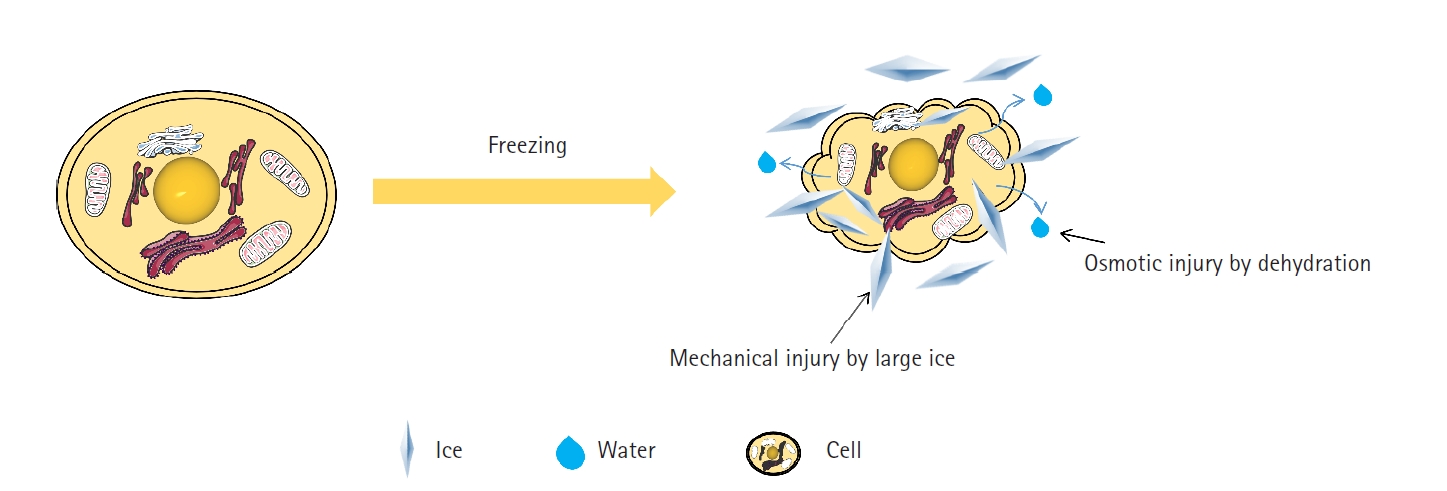

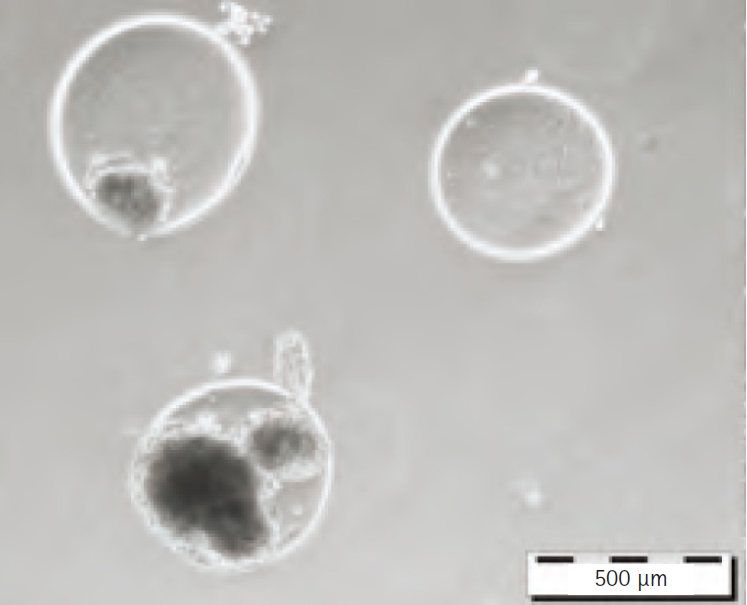
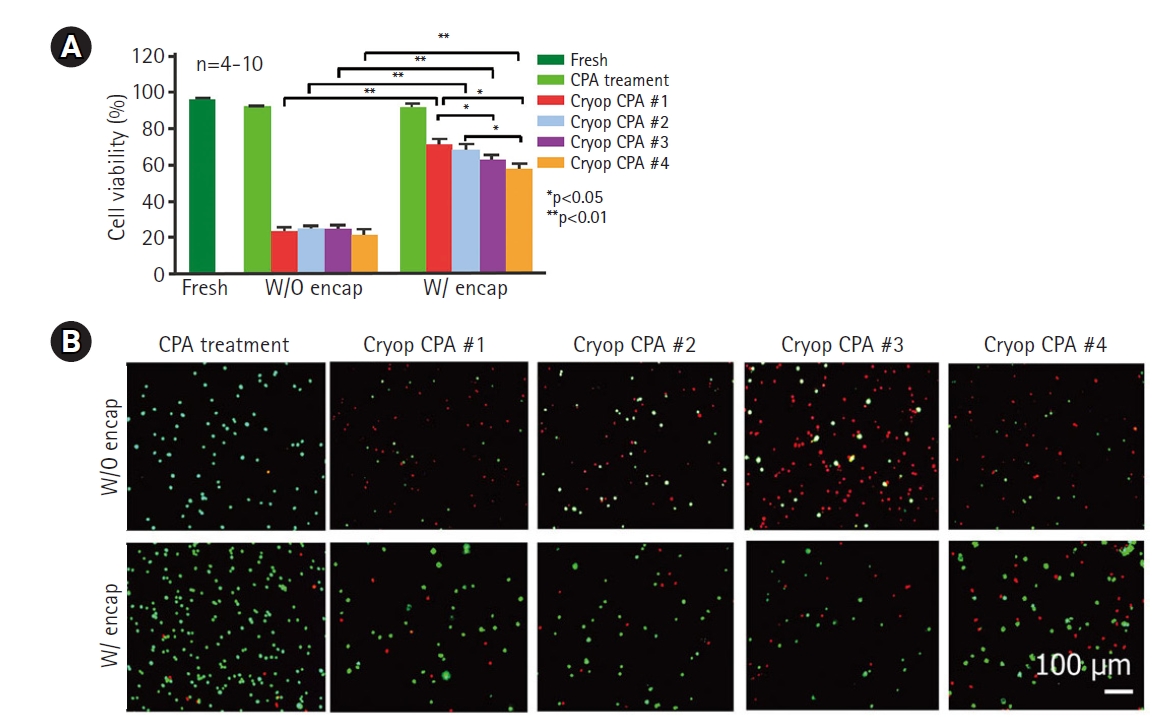







 PDF Links
PDF Links PubReader
PubReader ePub Link
ePub Link Full text via DOI
Full text via DOI Download Citation
Download Citation Print
Print



